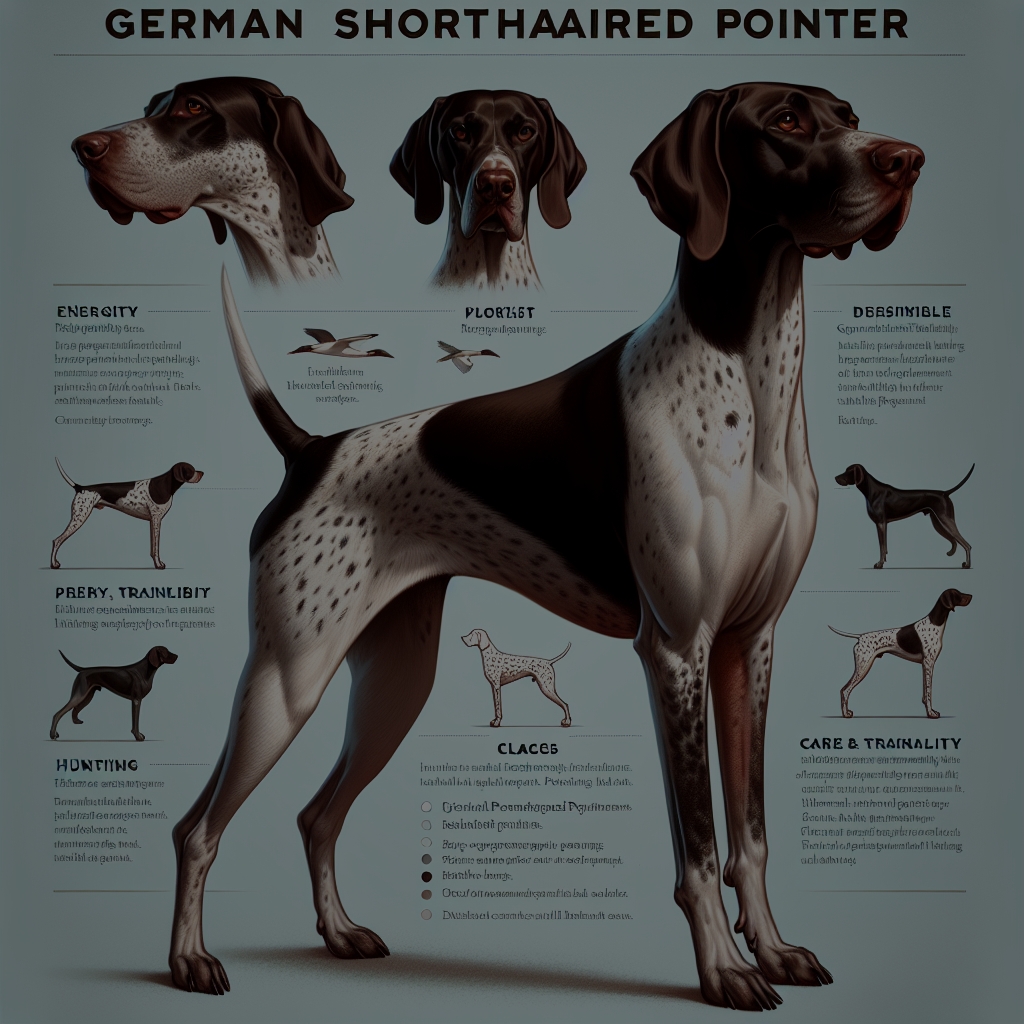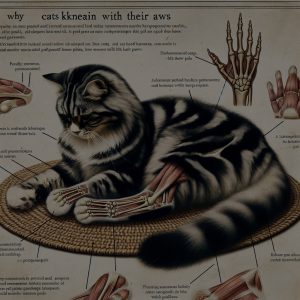
The German Shorthaired Pointer (GSP) is a versatile and intelligent breed, celebrated for its hunting prowess, athletic physique, and amiable temperament. This comprehensive guide will delve into the history and origin of the breed, their physical characteristics and breed standards, their temperament and behavioral traits, and common health considerations. Whether you’re a prospective GSP owner or simply an enthusiast, this article aims to provide a thorough understanding of this remarkable breed.
History and Origin of the German Shorthaired Pointer
The German Shorthaired Pointer’s origins trace back to 19th-century Germany, where breeders sought to create a versatile hunting dog. The goal was to develop a breed capable of flushing out game, pointing, and retrieving, both on land and in water. The foundation of the GSP was built upon various breeds including the Spanish Pointer, the English Pointer, and various German scent hounds, resulting in a dog with exceptional tracking and hunting abilities.
The breed’s development was significantly influenced by Prince Albrecht zu Solms-Braunfels, who emphasized not only the hunting capabilities but also the breed’s character and appearance. The result was a well-rounded dog that was suitable for family companionship as well as various hunting scenarios. By the early 20th century, the GSP had established a strong presence in Germany and began to gain popularity in other countries, including the United States.
The American Kennel Club (AKC) recognized the German Shorthaired Pointer in 1930, solidifying its status as a distinguished breed. Today, the GSP continues to be a favorite among hunters and active families, appreciated for its versatility, intelligence, and agreeable nature.
Physical Characteristics and Breed Standards
The German Shorthaired Pointer is a medium to large-sized dog, characterized by a well-proportioned and athletic build. Males typically stand between 23 to 25 inches at the shoulder, while females range from 21 to 23 inches. The breed’s weight generally falls between 45 to 70 pounds, depending on sex and overall build. Their coat is short, dense, and water-resistant, providing protection in various climates and terrains.
Breed standards emphasize a balanced and symmetrical appearance. The head is broad and slightly rounded, with expressive brown eyes that convey intelligence and alertness. Ears are set high and lie flat against the head. The muzzle is long and powerful, equipped with strong jaws suitable for carrying game. The GSP’s neck is strong and muscular, leading into a deep chest and well-sprung ribs that support significant lung capacity.
One of the most distinctive features of the GSP is their coat coloration, which can be solid liver or a combination of liver and white. Common patterns include liver roan, liver and white patched, or liver and white ticked. The breed’s tail is customarily docked to about 40% of its original length and is carried horizontally, adding to the overall streamlined appearance.
Temperament and Behavioral Traits
The German Shorthaired Pointer is renowned for its energetic and enthusiastic disposition. They are highly intelligent and trainable, making them excellent candidates for various canine sports and activities. These dogs thrive on physical exercise and mental stimulation, often excelling in agility, obedience, and, of course, hunting and fieldwork. Their keen sense of smell and tireless work ethic make them superior trackers and retrievers.
Social by nature, GSPs are known for their strong bonds with family members and generally get along well with children and other dogs. They are affectionate, loyal, and eager to please, which contributes to their popularity as family pets. However, their high energy levels mean they require regular and vigorous exercise to maintain their physical and mental well-being. Without adequate stimulation, they can become bored and potentially develop destructive behaviors.
Despite their amiable temperament, GSPs also possess a protective streak and can be wary of strangers, making them effective watchdogs. Early socialization is crucial to ensure they develop into well-rounded adults. Consistent training and positive reinforcement techniques work best for this breed, as they respond poorly to harsh methods. Overall, their blend of intelligence, loyalty, and energy makes them versatile companions.
Health Considerations and Common Ailments
German Shorthaired Pointers are generally robust and healthy dogs, but, like all breeds, they are predisposed to certain health conditions. Hip dysplasia is a common concern, where the hip joint does not fit properly into the hip socket, potentially leading to arthritis or lameness. Regular veterinary check-ups and screenings can help detect and address this issue early on.
Another common ailment in GSPs is bloat or gastric torsion, a life-threatening condition where the stomach twists, cutting off blood flow and trapping gases. This condition requires immediate veterinary intervention. To minimize the risk, it is advisable to feed the dog smaller meals multiple times a day and avoid vigorous exercise immediately after eating. Additionally, like many deep-chested breeds, GSPs are also prone to heart-related issues such as dilated cardiomyopathy.
Eye conditions, including progressive retinal atrophy and cataracts, can also affect the breed. Regular eye examinations by a veterinary ophthalmologist can help in early detection and management of these conditions. Responsible breeding practices, combined with a healthy diet and regular exercise, contribute significantly to the longevity and quality of life for the German Shorthaired Pointer.
In summary, the German Shorthaired Pointer is a versatile, intelligent, and affectionate breed, making it a superb companion for active families and hunting enthusiasts alike. Understanding their history, physical attributes, temperament, and health considerations can help potential owners provide the best care and environment for these energetic dogs. With proper training, exercise, and health management, the GSP can thrive and bring immense joy to those who welcome them into their homes.










